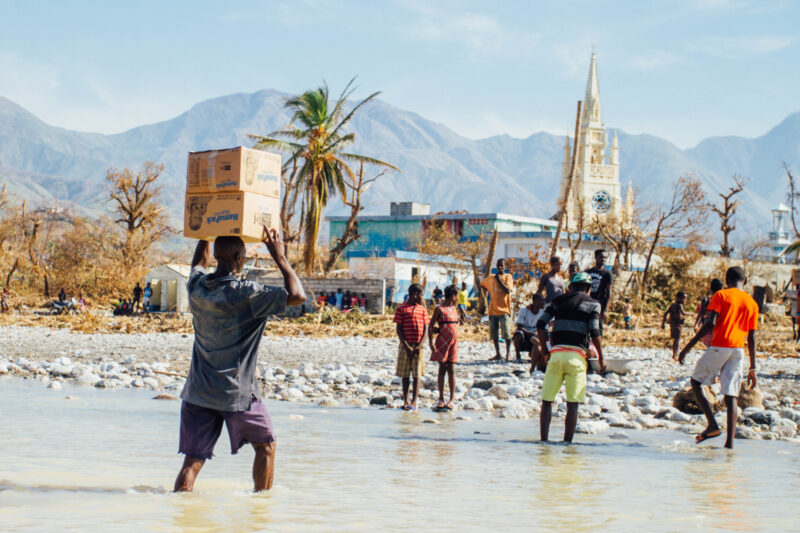The loss and damage fund must be accessible to those it was set up to serve – the most vulnerable to climate change
The board of the 'Fund for responding to Loss and Damage' has diverging views on accessibility. We look at lessons from similar funds and options currently on the table.
Share

Tomorrow, the 'Fund for responding to Loss and Damage' (Fund) will hold its third Board meeting, with a focus on finalising hosting arrangements with the World Bank. Developing countries have set out conditions that must be met before these arrangements are finalised. Ensuring direct access to the Fund’s resources is one of them.
At the last Board meeting in July, a split emerged between developed countries, who expect high standards for the fund, and developing countries, who also want high standards but don’t want its administrative burden to exclude the vulnerable groups it was set up to serve.
Those paying into the fund want resources to be spent efficiently and exposure to risks to be limited, while developing countries voiced concerns – based on firsthand experience – that the most vulnerable may not have the capacity to jump through extensive bureaucratic hoops to access funds.
We look at lessons from similar funds and options already being considered by the Board that could help streamline the process to satisfy both sides.
The benefit of funds set up under the UNFCCC
The Fund has the advantage of being developed under the UNFCCC, which gives vulnerable countries an equal voice in shaping the design and operations of climate funds alongside funder countries.
The new Fund's Secretariat is hosted by the World Bank but is accountable to a board representing 26 countries (12 developed and 14 developing countries). This offers an opportunity to create a balanced fund that is robust while being accessible to those who need it most.
Similar challenges seen with other funds
Another fund set up under the UNFCCC, the Green Climate Fund (GCF), set out to empower countries to manage projects through the accreditation of national entities. While the GCF modality is seen as a step forward in building national ownership and capacity, countries still report challenges with the fund’s high burden of proof and protracted accreditation and approval process. In 2022, the GCF’s Independent Evaluation Unit reported that countries struggle to accredit national bodies, and that most accredited entities remain international development banks.
Least developed countries reported that the accreditation requirements – particularly relating to fiduciary standards, legal status, and social and environmental safeguards – were too complex and better suited to international organisations. In fact, they often reported cases where national bodies had to drop out, as they were unable to meet the tough standards. Of the handful that qualified, most were only accredited to implement low-risk, small projects – including government ministries experienced in managing multi-billion-dollar projects.
Similarly, small island developing states (SIDS), despite greatly valuing the GCF, have reported access challenges. SIDS representatives interviewed for a recent study quote unreasonably high expectations, such as the need to have an internal auditing function or an international credit rating in place for organisations of no more than 20 employees working at the national level.
The future of the Fund for responding to Loss and Damage
Learning from this experience, the COP28 decision on the Fund for responding to Loss and Damage states that national governments can apply for direct budget support and communities can access small grants. More conventional options such as access via national, regional or multilateral entities are also on the table, while simplified procedures will be developed to quickly screen national and regional entities against international standards.
At the recent board meeting of the Fund, developing countries saw direct budget support to national governments as crucial. However, some developed countries called for a phased approach (while new procedures are formulated) which relies first on traditional entities like multilateral development banks and UN agencies, before expanding to include national bodies. Developing countries fear that this interim approach could set a precedent that becomes common practice.
To expedite the screening of national entities, the governing instrument of the Fund allows for direct access in partnership with entities already accredited to other funds, for example like the GCF, Global Environment Facility and Adaptation Fund. To allow more national entities to enter the picture, national governmental and non-governmental entities that already qualify under other established frameworks could also be considered. One example could be the framework used under the UN Development Group’s widely used Harmonized Approach to Cash Transfers (HACT).
While criteria, safeguards and standards are important for the long-term success of the fund, its entire purpose – to support the most vulnerable countries and communities – must be kept front and centre. This means the balancing act between high standards and fair access should be tipped in favour of ensuring the most vulnerable can access loss and damage finance when they need it most.
Image: Haiti Hurricane Matthew, Feed My Starving Children (FMSC) via Flickr, copyright license CC BY 2.0













